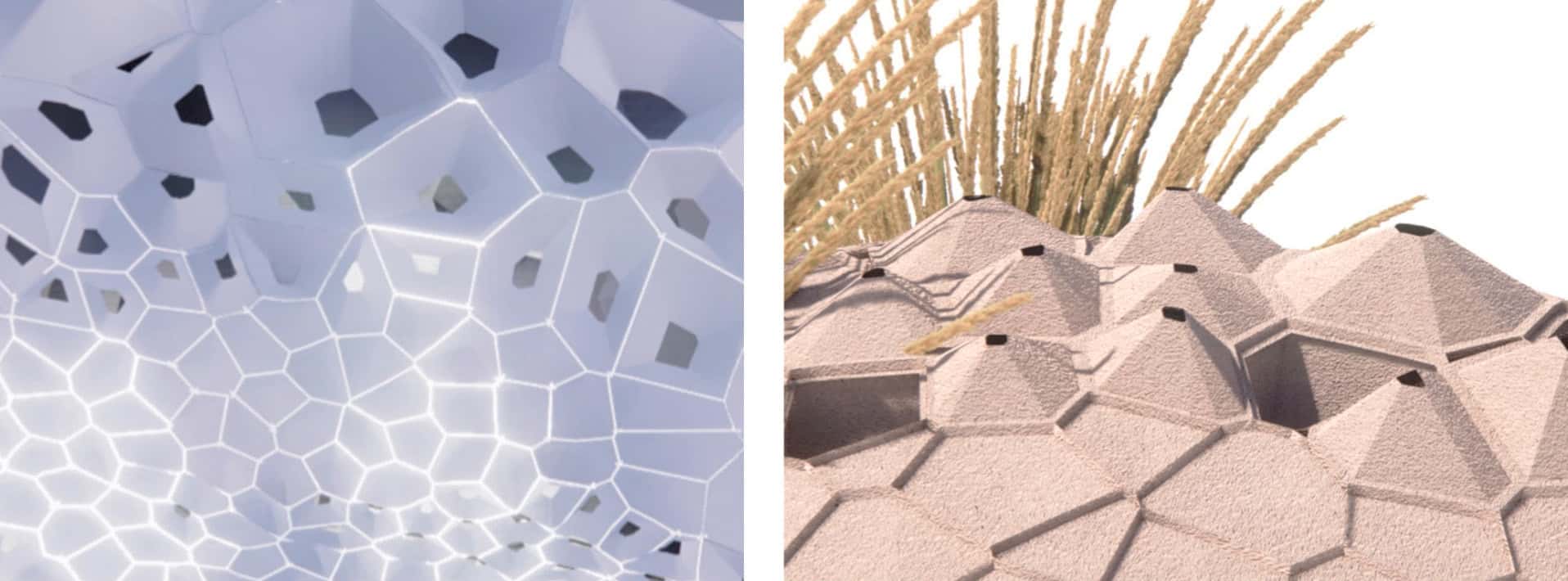Downloads
DOI:
https://doi.org/10.47982/spool.2022.1.04Keywords:
Bio-cyber-Physical Systems, Computational Design, Robotic Production and Operation, Artificial Intelligence, Residual Space, Minimal InterventionAbstract
Minimal interventions that provide various microclimates can stimulate both biodiversity and social accessibility of leftover spaces. New habitats are often developed for different animal and plant species based on studies of the microclimates typical of such residual spaces. By introducing interventions of 0.5-1.0 m diameter ‘planetoids’ placed at various locations, existing and new life is supported. The ‘planetoid’ described in this paper is prototyped by means of Design-to-Robotic-Production and -Operation (D2RP&O). This implies that it is not only produced by robotic means, but that it contains sensor-actuator mechanisms that allow humans to interact with them by establishing a bio-cyber-physical feedback loop.
How to Cite
Published
Issue
Section
Categories
References
Accordino, J., and Johnson, G. T. (2000). Addressing the Vacant and Abandoned Property Problem. Journal of Urban Affairs, 22(3), 301–315. https://doi.org/10.1111/0735-2166.00058
Bier, H., Cheng, A. L., Mostafavi, S., Anton, A., and Bodea, S. (2018). Robotic Building as Integration of Design-to-Robotic-Production and -Operation. In H. Bier (Ed.), Robotic Building (pp. 97–120). Springer International Publishing. https://doi.org/10.1007/978-3-319-70866-9_5
Edensor, T. (2005). Industrial Ruins: Space, Aesthetics, and Materiality. Bloomsbury Academic.
Gautier-Debernardi, J., Francour, P., Riera, E. and Dini, E. (2017). The 3D-printed artificial reefs, a modern tool to restore habitats in marine protected areas. The Larvotto-Monaco context. Proceedings of International Marine Protected Areas Congress Chile 2017.
Haase, A., Bernt, M., Großmann, K., Mykhnenko, V., and Rink, D. (2016). Varieties of shrinkage in European cities. European Urban and Regional Studies. https://doi.org/10.1177/0969776413481985
Harrison, C., and Davies, G. (2002). Conserving biodiversity that matters: practitioners’ perspectives on brownfield development and urban nature conservation in London. Journal of Environmental Management, 65(1), 95–108.
Kawata, Y. (2014). Need for Sustainability and Coexistence with Wildlife in a Compact City. International Journal of Environmental Science and Development, 5(4), 357.
Kowarik, I. (2013). Cities and Wilderness. International Journal of Wilderness, 19(3).
Lassus, B. (1998). The Landscape Approach. University of Pennsylvania Press.
Laurie, I. C. (1979). Nature in cities: the natural environment in the design and development of urban green space LK - https://tudelft.on.worldcat.org/oclc/3361580. Wiley.
Oskam, P. Y., and Mota, J. A. (2020). Design in the Anthropocene: Intentions for the Unintentional. In International Conference on Design and Digital Communication (pp. 269–279). Springer.
Schmidt, B.; Russell, C.T.; Bauer, J.M.; Li, J.; McFadden, L.A.; Mutchler, M.; et al. (2007). ‘Hubble Space Telescope Observations of 2 Pallas’. Bulletin of the American Astronomical Society.
Schwarz, U. (1980). Der Naturgarten: mehr Platz für einheimische Pflanzen und Tiere. Krueger W.





